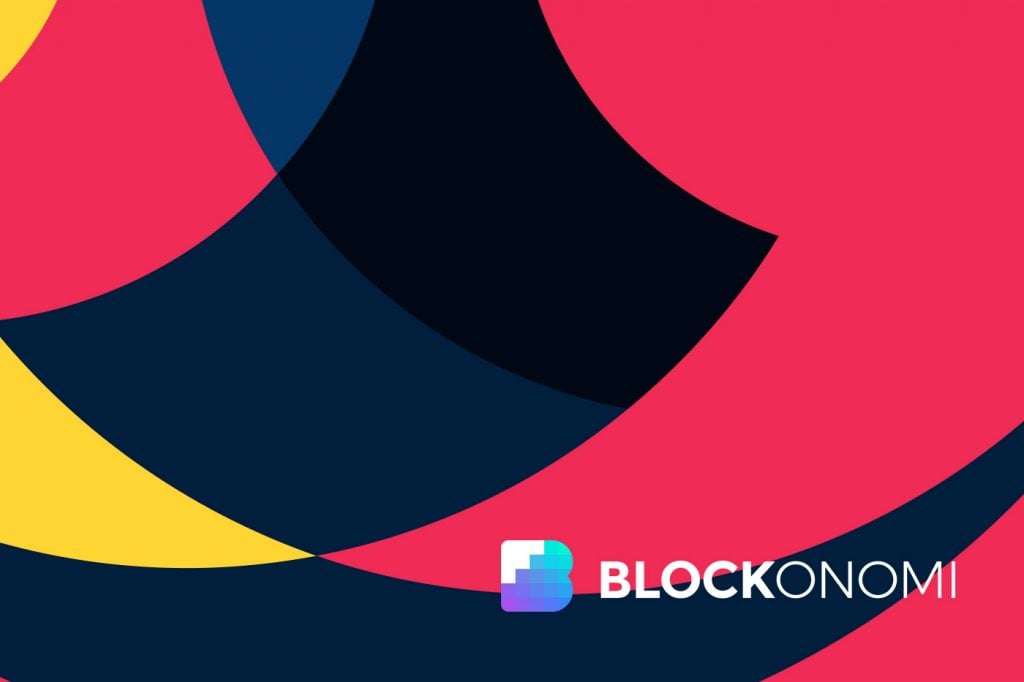- November 9, 2021
- Posted by: admin
- Category: BitCoin, Blockchain, Cryptocurrency, Investments


Decentralized Finance (DeFi) has been continuing to revolutionize the future of global finance as people’s interest in this space has exponentially increased over past years.
Officially launched in 2020, Balancer is a DeFi protocol and decentralized exchange. The platform has grown rapidly and offers a range of features.
DeFi is working to decentralize traditional financial services, therefore, decentralized exchange platforms are becoming popular ways for exchanging cryptocurrency assets and for those who are looking for a way of earning passive income from cryptocurrency holding.
New platforms offer complex solutions that can help users access comprehensive tools.
Users can benefit from multiple features on Balancer which are there for creating DeFi products. The most significant benefit from the Balancer protocol is the freedom that users will have in managing their liquidity.
What is Balancer?
Balancer protocol is an Automated Market Maker (AMM) which is a handy tool in the DeFi space. Automated Market Makers allow decentralized exchanges to function in a more efficient way.
Liquidity pools and complex algorithms are used to price assets as well as allow trades to take place without requiring centralized permission. In other words, an AMM makes the process of pricing and trading more comfortable for users.
Balancer is a protocol focusing on multi-token AMMs. It allows liquidity providers to act as portfolio owners. Also, they can create pools in the platform that makes it possible for traders to trade against them.
The Balancer protocol was developed by co-founders Fernando Martinelli and Mike McDonald through Balancer Labs. Both co-founders are well-known for developing successful companies in the blockchain space.
Balancer has not only risen to become one of the largest DeFi apps on Ethereum by total value locked (TVL) since its launching but also has been one of the top 15 DEX platforms that appealed to most trading volume.
Balancer Exchange
The Balancer DEX was built on the Ethereum blockchain and uses an AMM and liquidity pools. It allows users the ability to swap cryptocurrencies and earn interest on idle crypto portfolios.
Balancer users can swap ERC-20 assets by making use of liquidity pools without relying on a centralized entity. In addition, they also provide liquidity and earn a share of trading fees.
One of the things that Balancer is different from other platforms in the market is that its users have the flexibility to create their own private liquidity pools or create pools with more than two cryptocurrency assets. There are other many incentives offered to increase the liquidity on the Balancer Protocol.
Most recently, Balancer has integrated with the Gnosis protocol to leverage Gnosis’s price finding mechanism. Therefore, Balancer users now can also enjoy more benefits such as on-chain liquidity, MEV protection among others like better trading prices, and optimized gas costs.
Fernando Martinelli, Balancer Labs CEO & Co-Founder, stated,
“Gnosis brings unparalleled transparency and value to DeFi, focusing on user experience and enhancing industry growth. The combination of these two protocols will allow users to obtain the best benefits of Gnosis and Balancer, such as gasless trading, better overall prices, and MEV protection.”
Users will sign an off-chain message with their intent to trade instead of sending an executable transaction with a predetermined execution path as before, then, third parties will excuse trades with MEV protection, off-chain liquidity matching, and gas cost savings.
Balancer Pools
Balancer offers two types of pools including public pools and private pools.
Public pools are where anyone can provide liquidity to Balancer by adding digital assets. The parameters of these pools are set before launching and cannot be changed, even by their creators.
These pools most appeal to investors who would like to earn fees from their holdings.
Private pools are only for the creator to add or withdraw assets. Besides, it allows the creators to adjust other parameters of the pool including the acceptable assets, fees, and weighting.
A subsidiary of private pools is smart pools which are private pools owned by smart contracts. Smart pools are programmed to perform additional functions such as creating index funds and changing weights thanks to smart contracts.
The Balancer Token (BAL)
Like other DeFi apps, Balancer also has its own native cryptocurrency token which is known as BAL.
BAL token holders have a right to participate in the development of the protocol through voting on the implementation of layer two solutions, the deployment of Balancer in other blockchains beyond Ethereum, and the ability to adjust fees at the protocol level.
The maximum total supply of BAL tokens at 100 million coins, but there are just approximately 42 million existing.
The 100 million BAL tokens will be distributed as follows:
- Stakeholders in Balancer Labs including the founding team, investors, and advisors: 25 million
- The Balancer Ecosystem Fund: 5 million
- The Fundraising Fund for Balancer Lab: 5 million
- Rewards: 65 million with 145,000 BAL tokens will be distributed every week
In order to earn BAL, users have to lend cryptocurrency assets to a liquidity pool in the exchange and they will receive BAL rewards each week which is the trading fee that other traders paid to the network for the use of their funds.
How Does Balancer Work?
Each Balancer pool or AMM can be included in up to eight tokens. The liquidity provider determines the weight of each token during the creation process of the pool. The pool’s value will be determined by the percentage of tokens.
Serving as the backbone of Balancer protocol, smart contracts calculate and govern the correct proportion of tokens in pools. In basic words, they balance the ratio and weight of tokens when their price changes.
When a token’s price increases, the smart contract automatically decreases its amount aiming to maintain the value proportion of that token in the pool. Then, the decreased tokens will be sold to traders who want to buy the token when its prices go up.
Balancer is Different from Other AMM platforms
The balancer team has developed the platform with a unique algorithm, which is different from other AMMs.
Traditional AMMs use a constant 50-50 ratio in pools and pool creators are limited to two tokens in the pool. Meanwhile, the smart contracts in Balancer pools use a constant mean formula allowing more than two assets to be added to the pool with the ratio not limited to 50-50.
This unique approach of Balancer pools makes it possible to determine adaptive fee structures which work against market forces. As a result, it allows Balancer to manage volatility and change in demand in its smart pools over others in the DeFi world.
New BGP Protocol Adds Major Advantages
The Balancer-Gnosis-Protocol (BGP) is a joint-development between Balancer and Gnosis. BGP has been the default protocol for Balancer.fi, and it was created to protect traders and generate passive income.
From now onwards, Balancer users are entitled to benefit from using BGP on balancer.fi. The BGP new protocol combines the trustful Vault system of Balancer V2 with the remarkable Gnosis’ price-finding classic development.
As a result of this joint-creation from Balancer and Gnosis, users immediately enjoy on-chain liquidity, MEV protection and optimized trading prices and gas costs.
In the words of Fernando Martinelli, Balancer Labs CEO & Co-Founder —
“Gnosis brings unparalleled transparency and value to DeFi, focusing on user experience and enhancing industry growth. The combination of these two protocols will allow users to obtain the best benefits of Gnosis and Balancer, such as gasless trading, better overall prices, and MEV protection.”
By using BGP protocol, users at Balancer DEX are covered by MEV protection, can rely on best on-chain prices available, benefit from no-fees when transactions fail and reduced gas fees or none at all.
What is MEV Protection?
MEV or Miner Extractable Value is a conventional measure applied to the profit a Miner can obtain after applying convenient inclusions, exclusions, transaction re-orders, and more attributes to a block during its production.
Thanks to this protocol, above 730million dollars have been collected by Balancer users by taking advantage of bots programmed to detect front-running transactions and identify the suitable slippage allowed in trades.
The BGP protocol also protects traders and users from value extraction by leveraging batch auctions with common clearing prices, for all trades within the batch.
Balancer DEX users are able to leverage the Gnosis price-finding system,which is based on smart order routing and loved by traders for detecting gasless orders.
The batch auctions system at Balancer.fi is a trading mechanism capable of matching the trader’s liquidity in an off-chain mode, and being able to switch to on-chain style if needed, tapping into all available liquidity to match the off-chain liquidity needs.
All this happens within a single settlement smart transaction.
At Balancer.fi users don’t need to send executable transactions with execution paths as with most DEXs, users just need to sign an off-chain message agreeing on their intent to trade crypto, to be in.
From this point onwards a third-party entity executes the trade operations utilizing bots capable of matching whichever on-chain liquidity offers best price.
The ‘Coincidence of Wants’ Phenomena:
The CowSwap term refers to the ‘Coincidence of Wants’ economic phenomena: direct trades between peer-to-peer traders that connect and settle directly without the need of Automated Market Makers (AMMs). This type of direct trades prescind of slippage and fees.
The first trading interface created by Gnosis v2 is the renowned CowSwap protocol. This CowSwap price-finding mechanism provides its users the ability to buy and sell tokens on a gas-less manner by being settled o a peer-to-peer mode, or leveraged into an on-chain liquidity source.
All this happens without the need of an external liquidity provider or market maker, keeping the MEV protection, cutting on gas costs, protocol fees and slippage margins.
In a nutshell, using Balancer.fi means sending intents to trade to a set of 3rd party professionals in replacement of sending executable orders to the miners. These professional 3rd parties, the solvers, compete amongst each other for the best settlement solution.
The solvers bundle trades into batches, with MEV protection, off-chain liquidity matching and gas cost savings. The Balancer and Gnosis developers aimed at finding fair prices for traders by building the ultimate batch layer on Ethereum.
Closing Thoughts on Balancer
Decentralization has opened the new modern financial world for everyone to enter and benefit from earnings or valuable services.
Among others, Balancer is standing out as one of the most innovative platforms on Ethereum in the space because of its efforts to remove some of the burdens of liquidity providing and token swapping.
Balancer is a market leader with its innovative multi-token pools helping to increase the opportunities available to traders and liquidity investors.
Its smart pools are great options for those who are looking for more options in trading and contribute to the modern financial sector. Also, the platform is useful for those cryptocurrency investors who look to exchange cryptocurrencies at optimum prices or who look to potential with an idle portfolio.
At the present, Balancer is available for traders from Canada, United States, United Kingdom, France, Germany, Norway, Sweden, Italy, Denmark, United Arab Emirates, Saudi Arabia, Kuwait, Luxembourg, Qatar, Australia, Thailand, South Africa, Singapore, Hong Kong, India, and many other countries.
The post Balancer Review: Automated Portfolio Manager & Trading Platform appeared first on Blockonomi.
